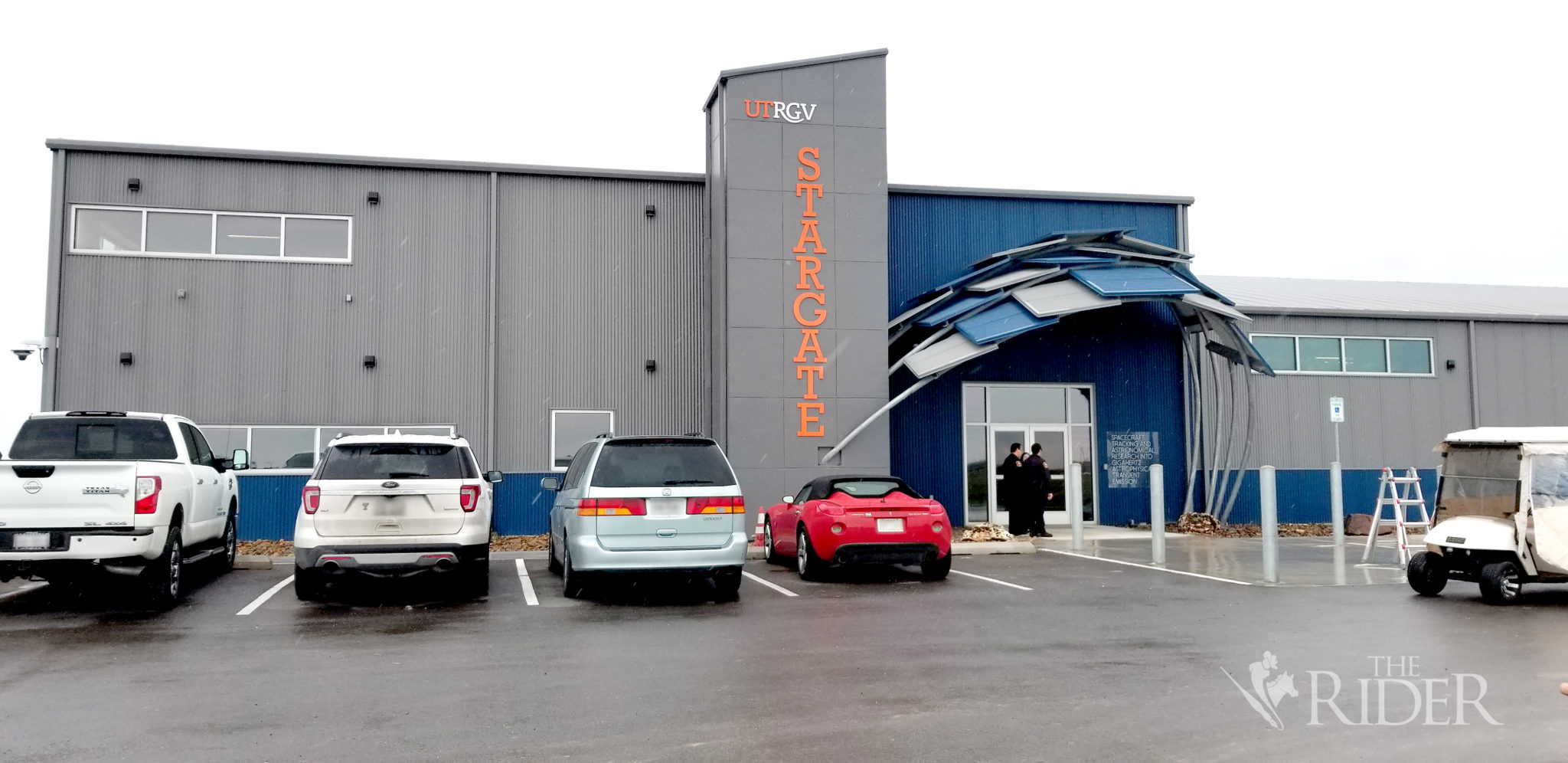
Local leaders say the new STARGATE Technology Center will open doors for students, faculty and entrepreneurs interested in the space exploration industry.
“They’re the reason we are here,” UTRGV President Guy Bailey told the press on March 18 after the ribbon-cutting ceremony for the STARGATE facility. “We hope that the startups will be startups of those students. … We hope this will be a great attraction for students. This is a great area to go into.”
The Spacecraft Tracking and Astronomical Research into Gigahertz Astrophysical Transient Emission, or STARGATE, is a program within UTRGV’s Center for Advanced Radio Astronomy (CARA) that will serve to provide lab space for research on space exploration and will collaborate with SpaceX.
“This is really the future of what we do,” Bailey said during the ceremony. “If you go around the United States, you’ll find very few universities that have a facility like this.”
Keeisi A. Caballero, a physics graduate student, said the facility puts UTRGV students in the same level as other universities that have the same advanced equipment.
“We are barely starting to get there and, hopefully, we can get more equipment and more stuff so that other students can also have opportunities to work here,” Caballero said.
Brent K. Cole, a physics graduate student, said the center will offer students an opportunity to work on their projects.
“It’s absolutely amazing that Dr. Jenet gives us this opportunity, the university, as well as the representatives that helped us with the funding,” Cole said.
Caballero and Cole will conduct their research at the new STARGATE Technology Center, which is located on State Highway 4 and adjacent to Boca Chica Beach. The building will serve as a base for radio frequency laboratories, incubator space for companies and have an electronics lab for prototyping radio-frequency instruments.
In an interview with The Rider, Fredrick A. Jenet, creator and director of CARA, said STARGATE received almost $10 million in funding, which was used for the development of the facility.
“The city had put in about half a million [dollars] and then there was about another $4 million, or so, that came from state and another $4.5 [million], or so, that came from UT System,” he said.
Among the dignitaries that attended the ceremony were Brownsville Mayor Tony Martinez, EDA Regional Director Jorge Ayala, District 4 Commissioner Ben Neece and U.S. Rep. Filemon Vela (D-Texas).
During the ribbon-cutting ceremony, Martinez thanked everyone who helped to create STARGATE.
“Today, I want to really acknowledge that we stand on the shoulders of giants that have the vision as to what needed to be done,” he said.
The cost of the STARGATE building, which measures 15,000 gross square feet on a 2.3-acre site, is $2.2 million. The facility is composed of classrooms, a flexible lab and research space.
STARGATE is working on a next generation radio frequency communications system, a smart surveillance system, a laser communication system that allows satellite-to-satellite communication, and technology to extract energy from ocean waves, according to Jenet.
“This is just the beginning,” he said. “We have an entire universe to explore, so we’ve got to get to it.”





